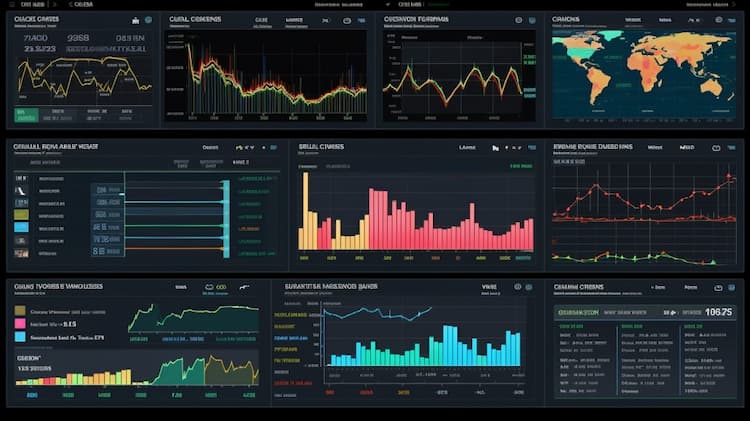
How can I invest in the AGG ETF?
Investing in the AGG ETF, or iShares Core U.S. aggregate Bond ETF, provides investors with an opportunity to gain exposure to a diversified portfolio of U.S. investment-grade bonds. If you are interested in investing in the AGG ETF, there are several ways to do so. In this article, we will explore the options for investing in the AGG ETF, including opening a brokerage account, consulting with a financial advisor, or utilizing online investment platforms. By understanding the available avenues for investing in the AGG ETF, investors can choose the method that aligns best with their investment preferences and goals, allowing them to potentially benefit from the stability and income generation offered by investment-grade bonds.
Understanding the AGG ETF
The AGG ETF, short for aggregate Bond ETF, is a popular exchange-traded fund that provides investors with exposure to a broad range of U.S. investment-grade bonds. It is designed to track the performance of the Bloomberg Barclays U.S. aggregate Bond Index, which includes various types of bonds such as government, corporate, and mortgage-backed securities. Investing in the AGG ETF can be an effective way to diversify your portfolio and gain exposure to the fixed-income market.
How to Invest in the AGG ETF
Investing in the AGG ETF is relatively straightforward. Here are the steps to get started:
Choose a brokerage: To invest in the AGG ETF, you need to open an account with a brokerage that offers access to ETFs. Some popular online brokers include TD Ameritrade, Fidelity, and Charles Schwab.
Fund your account: Once you have chosen a brokerage, you will need to fund your account. This typically involves transferring funds from your bank account to your brokerage account.
Search for the AGG ETF: Once your account is funded, search for the AGG ETF using its ticker symbol "AGG" on the brokerage's trading platform.
Place an order: After locating the AGG ETF, place an order to buy the desired number of shares. You can choose between market orders (executed at the current market price) or limit orders (executed at a specified price).
Monitor your investment: Once you have invested in the AGG ETF, it's important to regularly monitor its performance and make any necessary adjustments to your portfolio.
 AGG overlap How can I invest in the AGG ETF?
AGG overlap How can I invest in the AGG ETF?
Benefits of Investing in the AGG ETF
Investing in the AGG ETF offers several benefits for investors:
Diversification: The AGG ETF provides exposure to a wide range of bonds, helping to diversify your investment portfolio. This can help reduce the impact of any individual bond's performance on your overall investment returns.
Lower risk: As a bond ETF, the AGG ETF generally carries lower risk compared to investing in individual bonds. Bonds are considered less volatile than stocks, making the AGG ETF a suitable choice for investors looking for more stability.
Income generation: Bonds typically pay interest, and investing in the AGG ETF allows you to earn regular income through the dividends paid by the underlying bonds. This can be particularly appealing for investors seeking income from their investments.
Understanding AGG ETF FAQs
Here are some frequently asked questions (FAQs) about the AGG ETF:
What is the expense ratio of the AGG ETF? The expense ratio of the AGG ETF is the annual fee charged by the fund provider for managing the ETF. As of the latest data, the expense ratio for the AGG ETF is typically low, making it a cost-effective investment option.
Can I reinvest dividends from the AGG ETF? Yes, many brokerage platforms offer dividend reinvestment programs (DRIPs), allowing you to automatically reinvest the dividends received from the AGG ETF into additional shares.
Is the AGG ETF suitable for long-term investing? The AGG ETF can be suitable for long-term investing, especially for investors with a lower risk tolerance who are looking for steady income and capital preservation. However, it's important to consider your investment goals and risk profile before making any investment decisions.
Investing in the AGG ETF can be a valuable addition to your investment portfolio, providing exposure to a diversified range of U.S. investment-grade bonds. By following the steps outlined above, you can easily invest in the AGG ETF through a brokerage account. Remember to conduct thorough research, consider your investment goals, and consult with a financial professional if needed.
Disclaimer: This article is for informational purposes only and does not provide any investment advisory services. It is important to conduct your own research and seek professional advice before making any investment decisions.
Source 1: AGG issuer website
Source 2: Reuters article about AGG
AGG quote and analysis
Discover the top holdings, correlations, and overlaps of ETFs using our visualization tool.
Our app allows you to build and track your portfolio.
To learn more about the AGG iShares Core U.S. Aggregate Bond ETF, access our dedicated page now.
FAQ
What is the AGG ETF?
The AGG ETF, or iShares Core U.S. aggregate Bond ETF, is an exchange-traded fund that provides investors with exposure to the broad U.S. investment-grade bond market.
What is the underlying index that the AGG ETF aims to track?
The AGG ETF aims to track the performance of the Bloomberg Barclays U.S. aggregate Bond Index, which represents a diverse portfolio of U.S. investment-grade bonds, including Treasury, government-related, corporate, and securitized bonds.
What types of bonds are included in the AGG ETF?
The AGG ETF includes various types of bonds, such as U.S. Treasury bonds, government agency bonds, corporate bonds, mortgage-backed securities, and other high-quality fixed-income instruments issued in the United States.
How does the AGG ETF work?
The AGG ETF works by pooling investors' funds to purchase a diversified portfolio of bonds that closely replicate the performance of the underlying index. The ETF aims to provide exposure to the broad U.S. investment-grade bond market, allowing investors to gain access to a wide range of fixed-income securities.
What are the advantages of investing in the AGG ETF?
Investing in the AGG ETF offers potential benefits such as diversification across the U.S. investment-grade bond market, exposure to a wide range of bond sectors, potential income generation, potential risk reduction in a balanced portfolio, and ease of access to the bond market through a single investment. It provides liquidity, convenience, and the potential for stable income.





